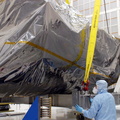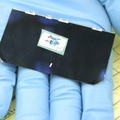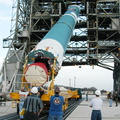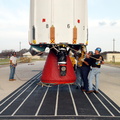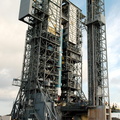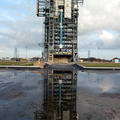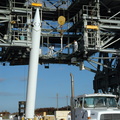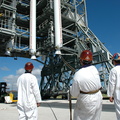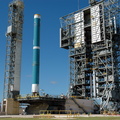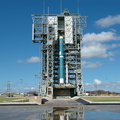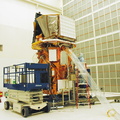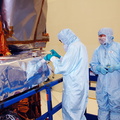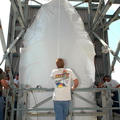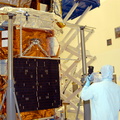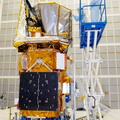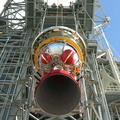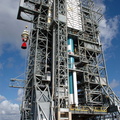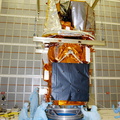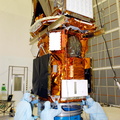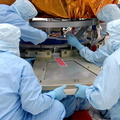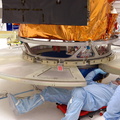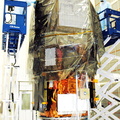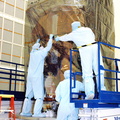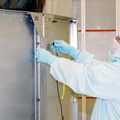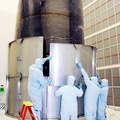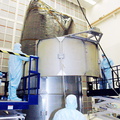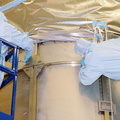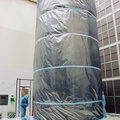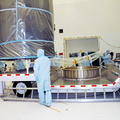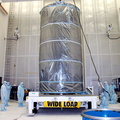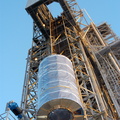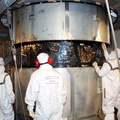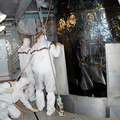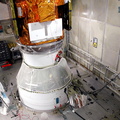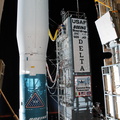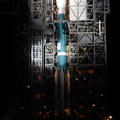
WIKIARCHIVES.SPACE
The Human Spaceflight Archive

Information
- Taken in
- Kennedy Space Center
- Author
- NASA
- Description
- In the mobile service tower on Launch Pad 17-A, Cape Canaveral Air Force Station, Boeing technicians maneuver the Swift spacecraft into position to be lowered onto the Boeing Delta II launch vehicle for mating. Swift is scheduled to launch Nov. 17. The liftoff aboard a Boeing Delta II rocket is targeted at the opening of a one-hour launch window beginning at 12:09 p.m. EST. A first-of-its-kind multi-wavelength observatory dedicated to the study of gamma-ray burst (GRB) science, Swifts three instruments will work together to observe GRBs and afterglows in the gamma ray, X-ray, ultraviolet and optical wavebands. Gamma-ray bursts are distant, yet fleeting explosions that appear to signal the births of black holes.
- Created on
- Monday 8 November 2004
- Albums
-
Locations / OSM-4.915832801313164
US SPACE PROGRAM / SATELLITES / DELTA II / SWIFT / Rocket preparation
- Source link
- https://science.ksc.nasa.gov/gallery/photos/2004/captions/
- Visits
- 31
- Rating score
- no rate
- Rate this photo
- License
- CC BY-NC-ND
- Modified by WikiArchives
- No (original)
- Downloads
- 0
Powered by Piwigo







